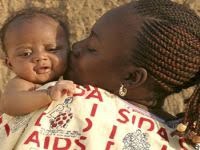Over 34 million people living with HIV worldwide
By Paula Laboissière *
A report released on Wednesday (18th) by the Joint United Nations Programme on HIV / AIDS (UNAIDS) indicates that there are 34.2 million people living with HIV worldwide, with 30.7 million adults, 16.7 million of them women and 3.4 million children under 15.
Sub-Saharan Africa recorded the highest number of people infected, with 23.5 million, followed by South and South-East Asia, with 4.2 million. The Pacific has the lowest estimate, 53,000 infected. In Latin America, there are 1.4 million.
Data also indicate that in 2011, 2.5 million new infections have been identified worldwide, with 2.2 million adults and 330,000 children under 15 years. The number represents more than 7,000 new infections per day and 97% were reported in among low-and middle-income.
Sub-Saharan Africa leads the ranking with 1.7 million new infections. Then comes South and South East Asia (300,000) and Eastern Europe and Central Asia (170,000). In Latin America, 86,000 people were infected in 2011.
Deaths caused by HIV in the same period totaled 1.7 million, with 1.5 million adults and 230,000 among children under 15 years of age. In North America, 20,000 people died last year due to HIV, in the Caribbean region, 10,000; in Latin America, 57,000; in Western and Central Europe, 9,300; in Eastern Europe and Central Asia 90,000, East Asia, 60,000; in South and South-EasternAsia, 270,000; North Africa and the Middle East, 25,000; Sub-Saharan Africa, 1.2 million and Oceania, 1,300.
The coordinator of UNAIDS in Brazil, Pedro Chequer, explained that the high number of people with HIV worldwide is a reflection of the fall in deaths from the disease, mainly because of increased access to antiretroviral drugs. "These people are living longer and not dying, as before," he said. "This is the first time the UN published a report with a positive outlook, that we can achieve in 2015 to control the epidemic."
He said the drop in registered reports of this disease in sub-Saharan Africa, is a result that was expected on some of the perspectives presented in the 1980 and 1990. But he said the disease advances in Russia and Central Asia.
Chequer also warned that women account for almost half the number of people living with HIV worldwide. He said there was particular concern with new infections among young women and homosexuals.
* Originally published in Brazil Agency
Translated from the Portuguese version by:
Lisa Karpova
Pravda.Ru

Subscribe to Pravda.Ru Telegram channel, Facebook, RSS!





